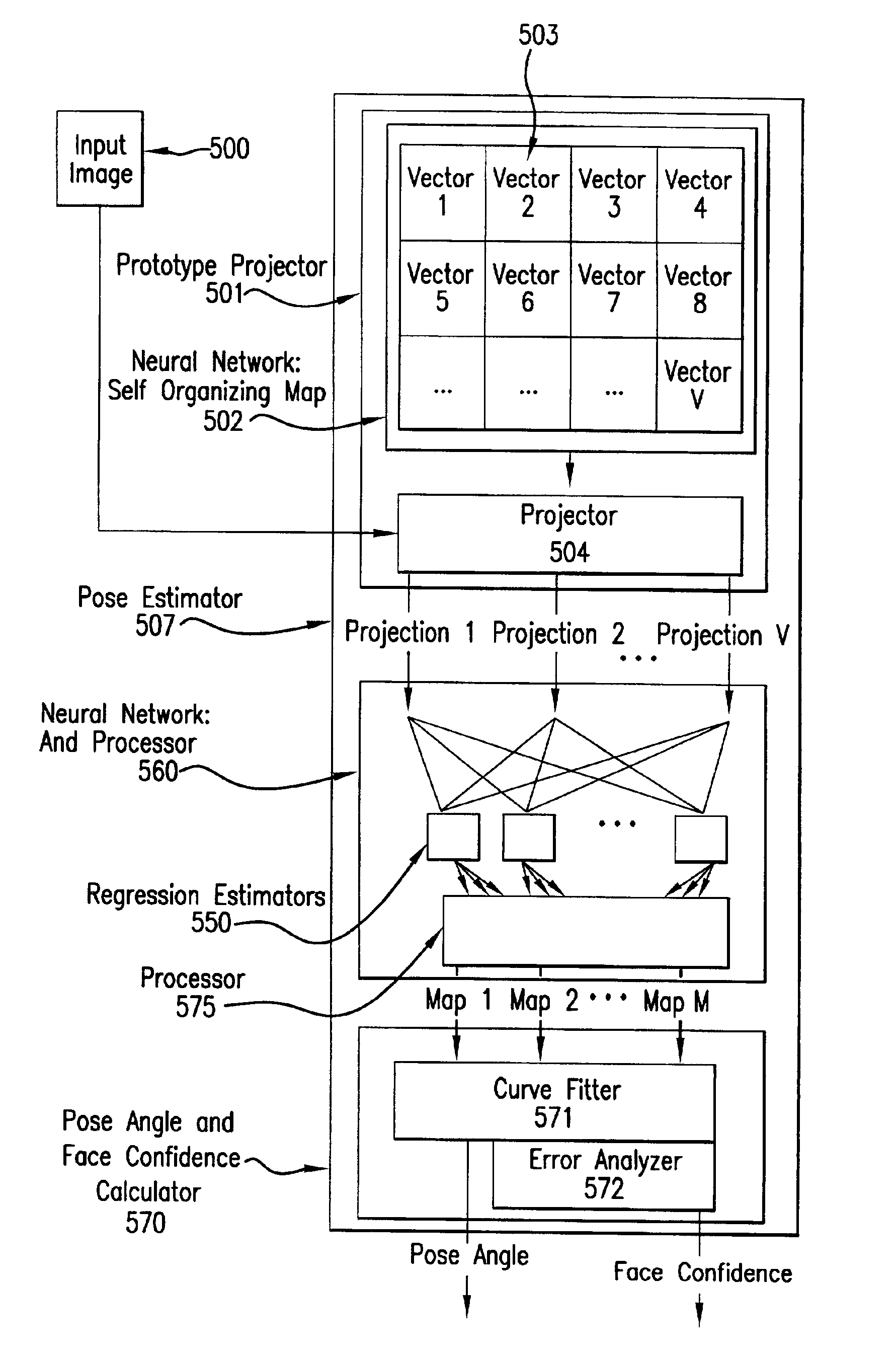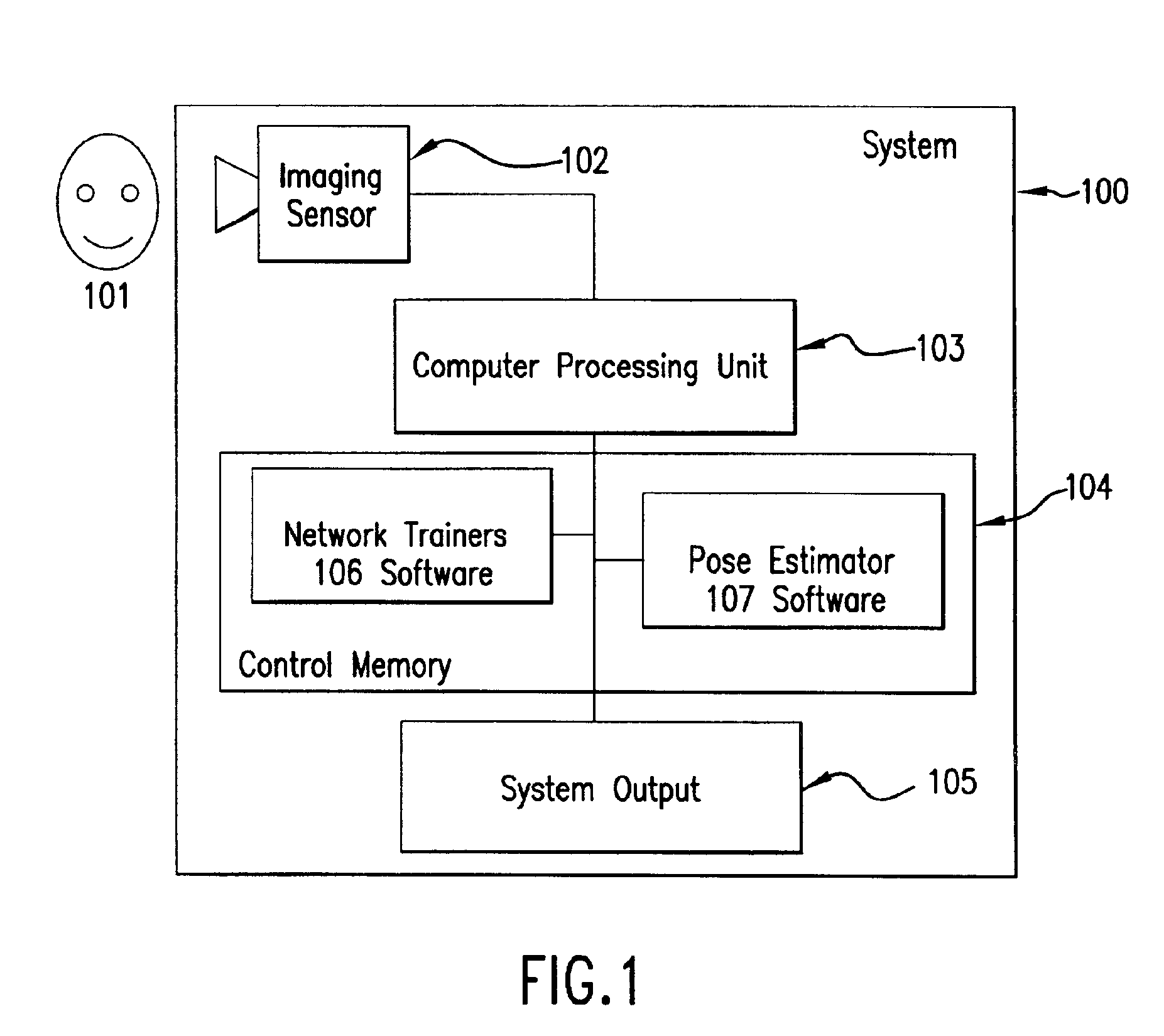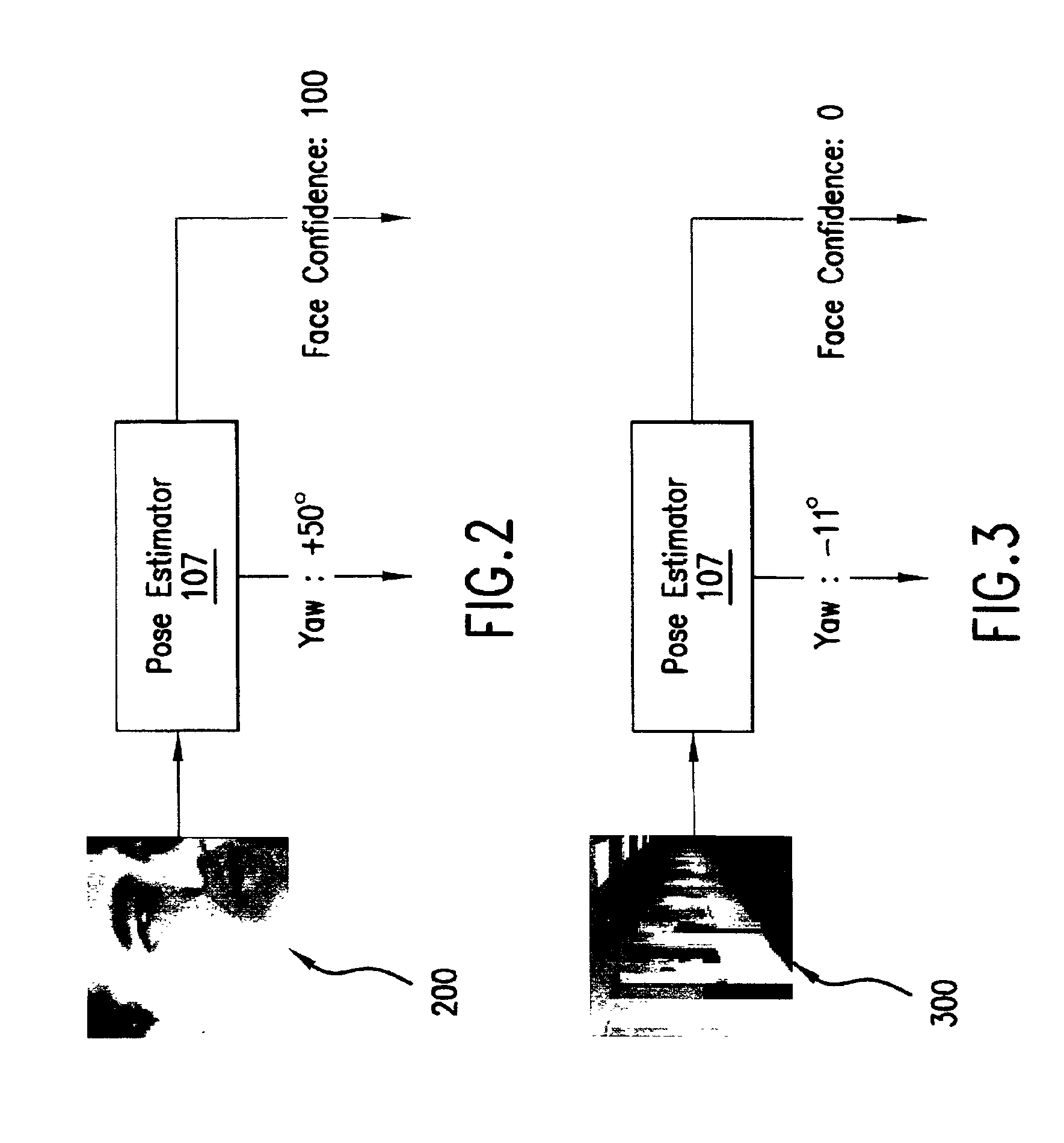System and method for pose-angle estimation
a pose estimation and system technology, applied in the field of image analysis, can solve the problems of high computational complexity of model-based approaches, inability to meet personal computer capabilities, and inability to accurately estimate the pose angle of head poses from photographs, video sequences, etc., and achieve the effect of reducing the dimensionality of input images
- Summary
- Abstract
- Description
- Claims
- Application Information
AI Technical Summary
Benefits of technology
Problems solved by technology
Method used
Image
Examples
Embodiment Construction
I. System Architecture
[0055]FIG. 1 shows a preferred embodiment of a system 100 suitable for estimating the pose angle of an object in an input image. For purposes of illustration, operation of system 100 will be primarily described in connection with estimating the pose angle of a particular class of objects, i.e., human heads. It should be recognized, however, that the present system and method may be more broadly applied to other objects, as described below.
[0056]In addition, for purposes of illustration, operation of system 100 will be primarily described in connection with estimating the pose angle of a human head in one dimension, i.e., yaw. It should be recognized, however, that the present system and method may be more broadly applied to calculate pose angle in one or more dimensions, as described, for example, in connection with FIGS. 6-8 below.
[0057]In the following description, a particular convention is adopted to describe the pose angle of a human head in the yaw, pitch...
PUM
 Login to View More
Login to View More Abstract
Description
Claims
Application Information
 Login to View More
Login to View More - R&D
- Intellectual Property
- Life Sciences
- Materials
- Tech Scout
- Unparalleled Data Quality
- Higher Quality Content
- 60% Fewer Hallucinations
Browse by: Latest US Patents, China's latest patents, Technical Efficacy Thesaurus, Application Domain, Technology Topic, Popular Technical Reports.
© 2025 PatSnap. All rights reserved.Legal|Privacy policy|Modern Slavery Act Transparency Statement|Sitemap|About US| Contact US: help@patsnap.com



